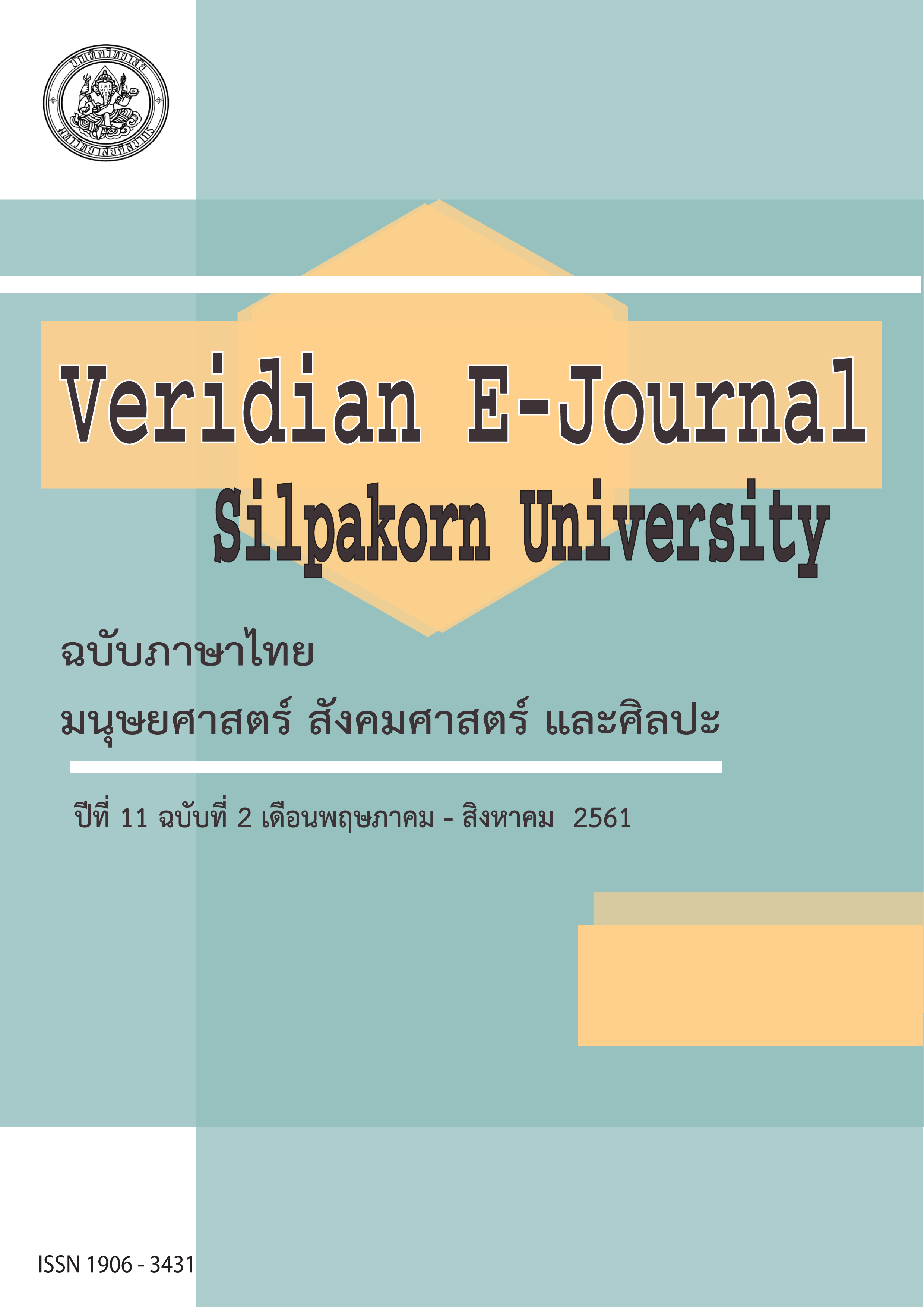รูปแบบการพัฒนาสู่โรงเรียนสอนคิด (Development Of A Thinking School Model)
Main Article Content
Abstract
การวิจัยนี้มีความมุ่งหมายเพื่อสร้างและประเมินความเหมาะสมและความเป็นไปได้ของรูปแบบการพัฒนาสู่โรงเรียนสอนคิด การดำเนินการวิจัยแบ่งเป็น 2 ตอน คือ ตอนที่ 1 สร้างรูปแบบการพัฒนาสู่โรงเรียนสอนคิดด้วยการศึกษาเอกสารและงานวิจัยที่เกี่ยวข้อง สัมภาษณ์ผู้ทรงคุณวุฒิ จำนวน 10 คน ซึ่งเป็นผู้บริหารโรงเรียนที่ประเทศสหพันธ์สาธารณรัฐเยอรมัน จำนวน 4 คน ได้แก่ โรงเรียน Europaschule Burggymnasium, Waldkindergarten, Sekundarschule และ UNESCO –Schule Essen และ สัมภาษณ์ผู้บริหารโรงเรียนทางเลือกที่ส่งเสริมทักษะการคิดของนักเรียนในประเทศไทย จำนวน 6 โรง ได้แก่ โรงเรียนสัตยาไส โรงเรียนรุ่งอรุณ โรงเรียนดรุณสิกขาลัย โรงเรียนเพลินพัฒนา โรงเรียนลำปลายมาศพัฒนา และโรงเรียนอำนวยศิลป์ เครื่องมือ การวิจัย คือ แบบสัมภาษณ์แบบกึ่งโครงสร้าง การเก็บรวบรวมข้อมูล ผู้วิจัยดำเนินการสัมภาษณ์ด้วยตนเองทำการวิเคราะห์ข้อมูลด้วยวิธีการวิเคราะห์เนื้อหา (Content Analysis) และสอบถามครูที่รับผิดชอบและจัด การเรียนการสอนส่งเสริมการคิดจำนวน 305 คน
เครื่องมือที่ใช้ ได้แก่ แบบสัมภาษณ์และแบบสอบถามแบบมาตราส่วนประมาณค่า จำนวน 88 ข้อ และวิเคราะห์ข้อมูลด้วยการวิเคราะห์เนื้อหาและการวิเคราะห์องค์ประกอบ ตอนที่ 2 ประเมินความเหมาะสมและความเป็นไปได้ของรูปแบบการพัฒนาสู่โรงเรียนสอนคิด ผู้ประเมิน คือ ผู้บริหารสถานศึกษา ผู้บริหารการศึกษาและอาจารย์มหาวิทยาลัย รวม 15 คน เครื่องมือที่ใช้ คือ แบบประเมินความเหมาะสมและความเป็นไปได้ของรูปแบบการพัฒนาสู่โรงเรียนสอนคิด และวิเคราะห์ข้อมูลด้วยค่าความถี่และการทดสอบไคว์สแคว์
ผลการวิจัย พบว่า รูปแบบการพัฒนาสู่โรงเรียนสอนคิด ประกอบด้วย 8 องค์ประกอบหลัก ได้แก่ 1) นโยบายการศึกษา 2) ภาวะผู้นำของผู้บริหาร 3) ภาวะผู้นำของครู 4) บุคลิกภาพของครูที่ส่งเสริมการคิด 5) การอบรมเลี้ยงดู 6) คุณลักษณะของนักเรียนที่ส่งเสริมการคิด 7) หลักสูตรที่ส่งเสริมการคิด และ 8) สภาพแวดล้อมที่เอื้อต่อการคิด ซึ่งทั้ง 8 องค์ประกอบสามารถอธิบายการพัฒนาสู่โรงเรียนสอนคิดได้ร้อยละ 64.70 และ รูปแบบการพัฒนาสู่โรงเรียนสอนคิดมีความเหมาะสมและมีความเป็นไปได้อย่างมีนัยสำคัญทางสถิติ ที่ระดับ .01
The purposes of this research were to construct and to evaluate the propriety and feasibility of the development of a Thinking School Model. The methodology consisted of two stages which were as follows: 1) to construct the development of a Thinking School Model with documents and relevant research, interviews 10 school administrators, and survey 305 teachers who responsible and arrange teaching and learning encouraging thinking skill. The research tools included interview form and 88 items Likert scale questionnaires. The data were analyzed by content analysis and factor analysis, 2) to evaluate the propriety and feasibility of the development of a Thinking School Model. The evaluators were 15 school administrators, educational administrators, and university lecturer. The research tools included a questionnaire for the propriety and feasibility of the development of a Thinking School Model. The data analysis was performed with frequency analysis and Chi-square test. The results indicated the following: The development of a Thinking School Model consisted of eight main factors which were as follows; 1) education policy, 2) educational administrative leadership, 3) leadership among teachers, 4) the personality of the teacher encouraging students’ thinking, 5) the nurturing method, 6) the students’ characteristic encouraging their thinking, 7) curriculum encouraging students’ thinking, and 8) environment supporting thinking. These eight components could explain 64.70% of the development of a thinking School Model and the development of a Thinking School Model met the propriety and feasibility standard with statistically significant level of .01.

